All products featured are independently chosen by us. However, SoundGuys may receive a commission on orders placed through its retail links. See our ethics statement.
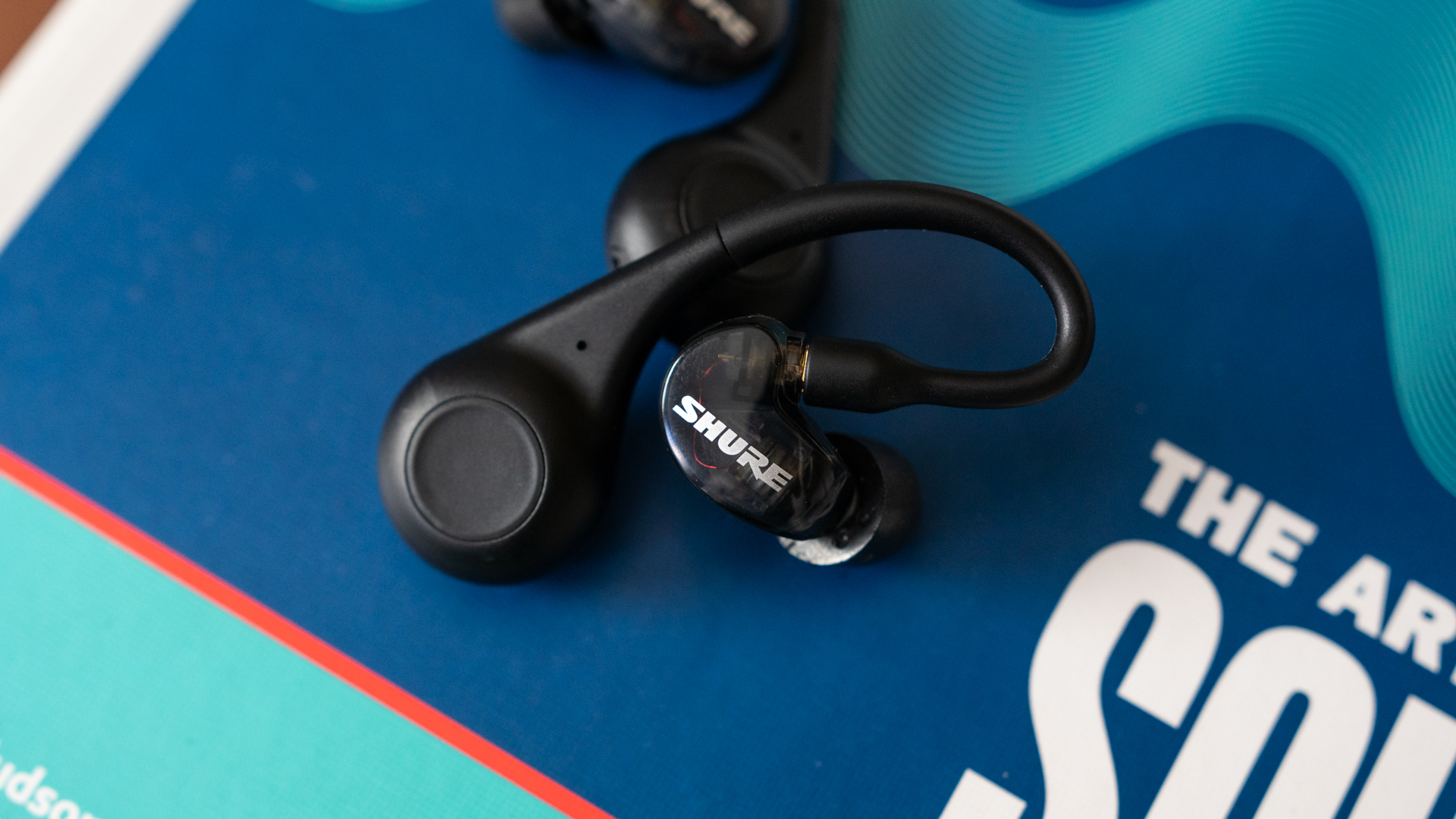
Shure AONIC 215 review
October 20, 2021
Shure AONIC 215
Shure has a long history of making great audio products, but it’s not the go-to brand for most consumers. Unless you have an audiophile friend (or you are that audiophile friend), you probably haven’t come across too many Shure products. The Shure AONIC 215 is the company’s take on what a good-sounding pair of true wireless earbuds should be, but what is that, exactly?
Editor’s note: this Shure AONIC 215 review was updated on October 20, 2021, to address the Shure AONIC 215 Gen 2 which replaces the first-gen headset, to replace the frequency response and isolation charts, and update the scores according to our new test system.
Who should get the Shure AONIC 215?
- Anyone who already has Shure in-ears. The true wireless adapters are compatible with any Shure earbuds because the adapters and earbuds share the same MMCX connectors.
- Fans of the Shure SE215 will deeply appreciate not having to change much about their experience, minus the lack of a huge wireless dongle or physical plug.
- People who want the best-sounding true wireless buds. While these earphones have their drawbacks, sound quality is not one of them.
What’s it like to use the Shure AONIC 215 true wireless in-ears?

The Shure AONIC 215 is unlike your average true wireless earbuds: most true wireless earbuds are a single unit, which means that all the hardware is built into each earbud, but that isn’t the case with the AONIC 215. These earbuds are basically the Shure SE215 earbuds attached to adapters—which may sound a little lazy, but Shure didn’t have to reinvent the wheel.
Start here: Ultimate headphone buying guide
If you already have a pair of Shure earphones with the MMCX connectors on the buds, you can just get the adapters separately and attach your buds of choice. Similar to the SE215, the AONIC 215 is worn over the ear because of the hooked design. These earbuds are very similar to the Powerbeats Pro, with the added bulk of the tech packed into the bulbous part hidden behind your ear. Don’t use these buds during your next workout though, because they lack an IP rating.
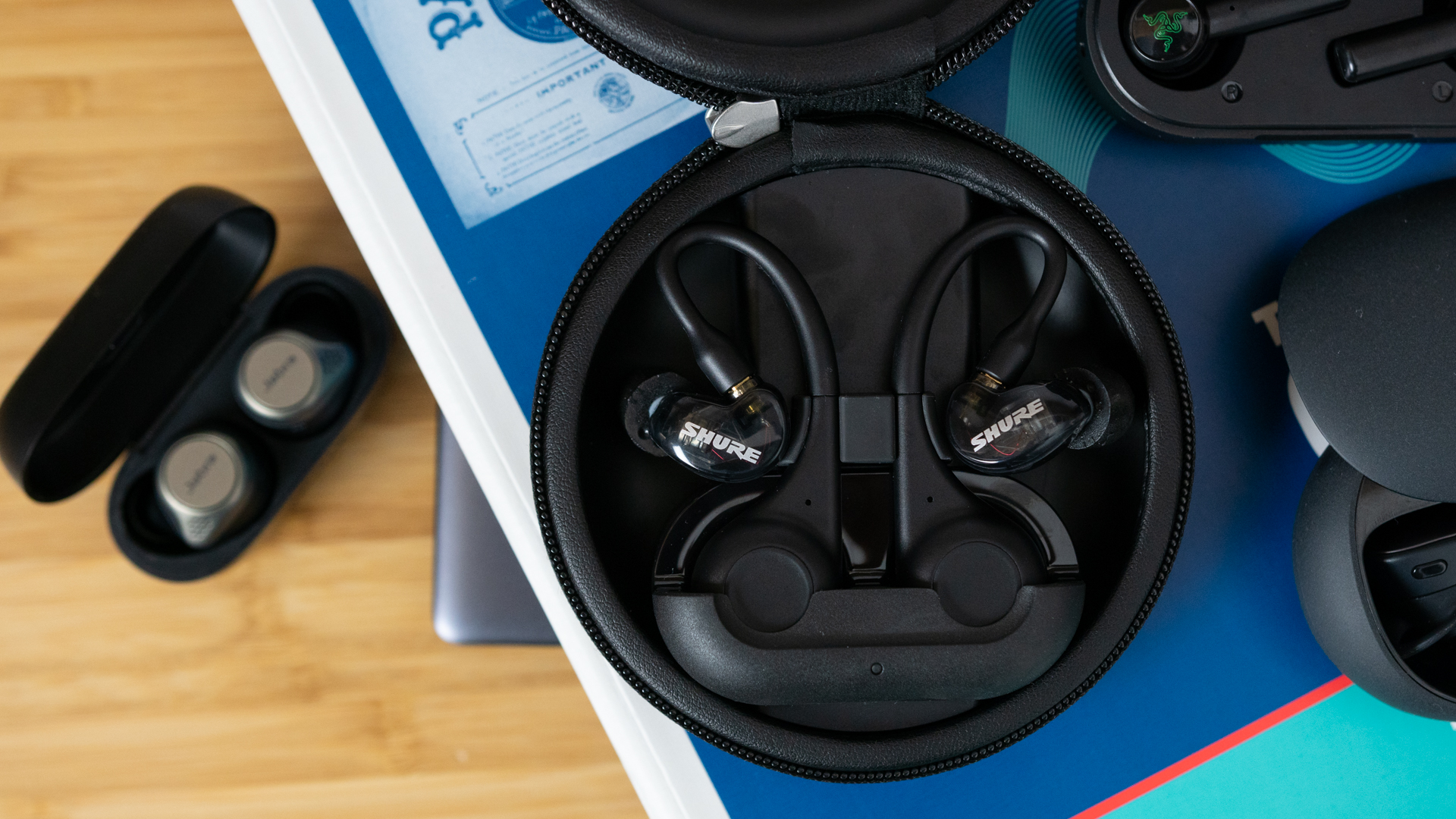
The interchangeable design is clever, but the Shure AONIC 215 isn’t quite as convenient as other, more affordable earbuds. Much about this headset is a little cumbersome. Take the charging case: part of the AirPods‘ allure is the compact, nature of the case. It’s pocketable, and the lid snaps shut securely with magnets, both of which cannot be said about the Shure AONIC 215 case. Instead, Shure went with a huge case.
Instead of magnets or springs holding the lid closed, you get a zipper that requires two hands to operate. It’s difficult to snap the earbuds properly into the odd-shaped nooks. Good luck putting them back in the case with the lights off. Considering these cost $229 USD at the time of this review, I expected a more streamlined approach to the user experience.
While they do sound great they miss the mark in terms of convenience.
On the bright side, the earbuds are a joy to wear. They fit my ears extremely well and are accompanied by different ear tips so that anyone can achieve a comfortable fit. Unlike the charging case, every aspect of the earbuds and their adapters are designed very thoughtfully. They fit snugly and don’t cause ear fatigue, even after hours of wear. Unless you have exceptionally small ears, they’ll obscure the adapters from view.
The onboard controls aren’t great
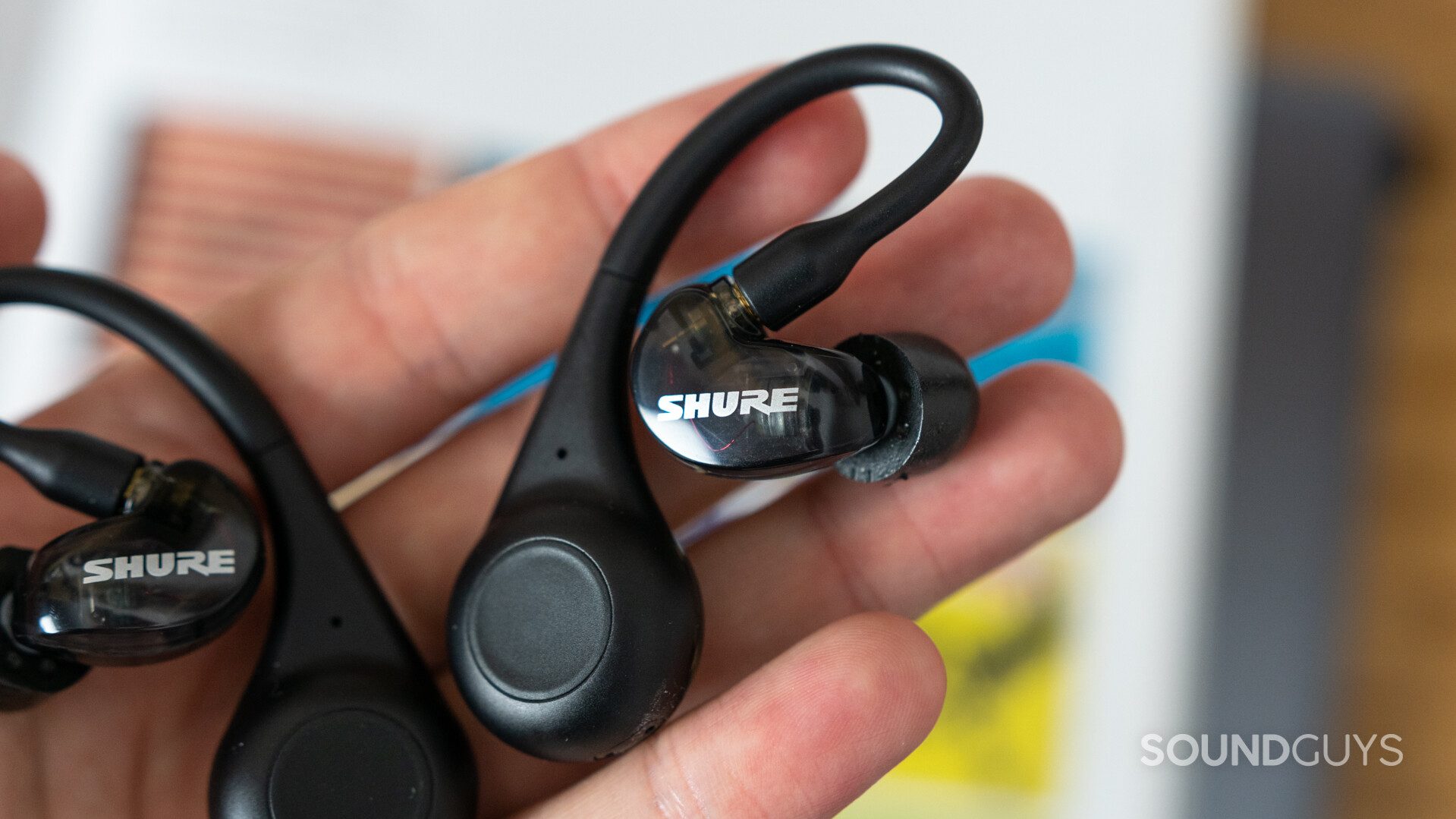
My biggest complaint about the AONIC 215 adapters is the multifunction button: it’s too squishy for my liking. I wish it had more of a tactile click, but that’s an issue of personal preference and not something that many people will care about. Still, controlling playback from the adapter behind my ear instead of directly on top of my ear canal is a huge improvement over competing models. It solves the suction issue, which is when you press a button and it creates an uncomfortable suction feeling from the pressure change in your ear canal.
Operating the multifunction button is great, but its functionality is very limited and can’t yet be remapped in the ShurePlus PLAY app. A single tap on the button lets you pause or play your music, but there aren’t any other playback controls here. Instead of skipping to the next track, a double-tap instead enables transparency mode. This is great for safety purposes—it lets you hear your surroundings—but I would have preferred the ability to skip tracks. Transparency mode isn’t even that effective; I can barely hear my environment with it being enabled.
Does the Shure AONIC 215 stay connected?
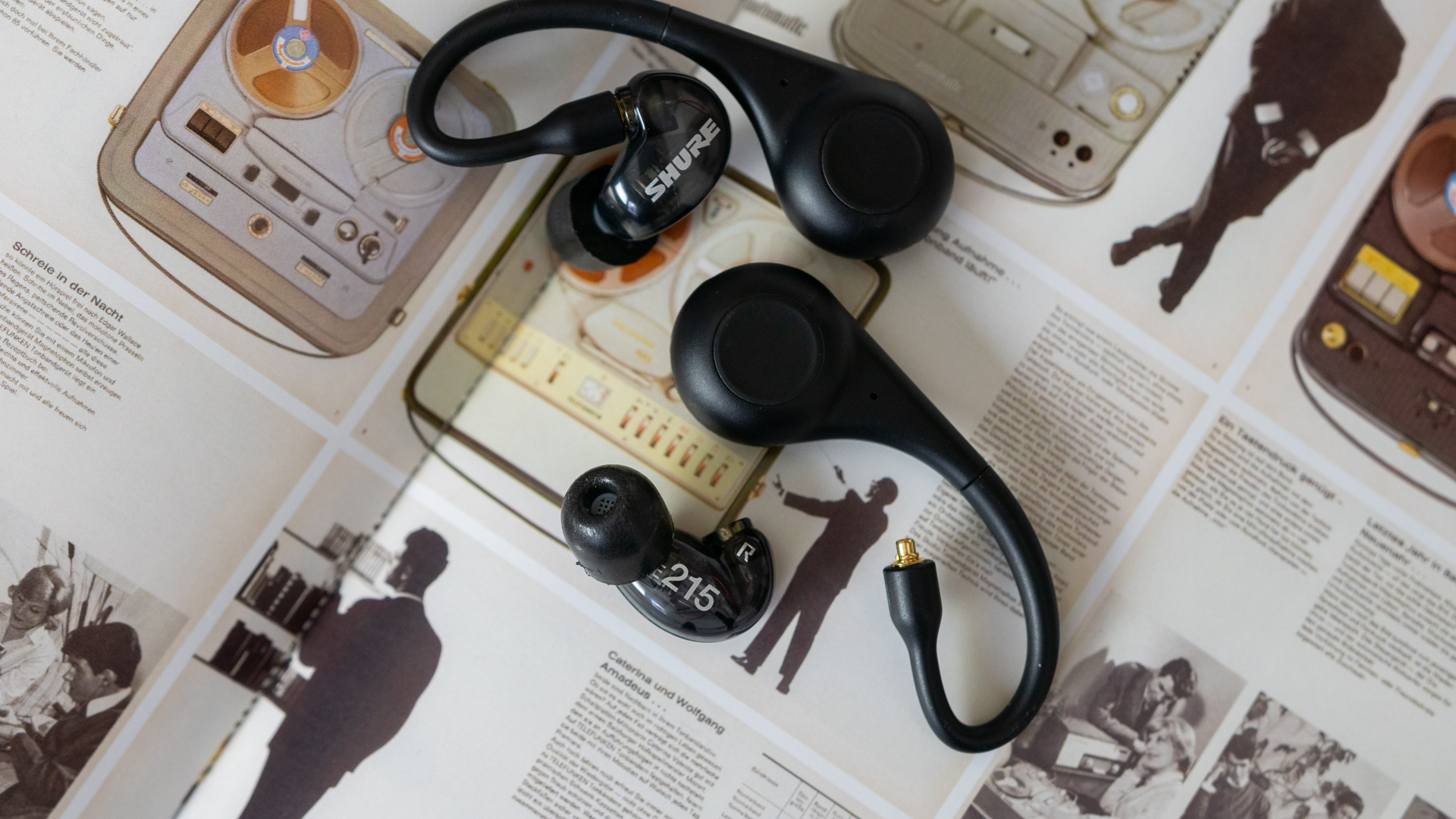
The earphones sport Bluetooth 5.0, which yields a stable connection and greater power efficiency than Bluetooth 4.0 products. You’ll find user reports regarding issues where the left earbud disconnects or doesn’t connect at all, but this isn’t an issue with our review unit. There are, however, a few hiccups that occur from either earbud every now and then.
The Shure AONIC 215 is stacked with high-quality Bluetooth codecs. These support AAC and aptX (SBC, too, of course), so you can appreciate high-quality wireless playback whether you’re rocking an iOS device or an Android phone. There’s no audio lag when watching videos, so if you’re someone who likes to kill time on YouTube: you shouldn’t have any issues.
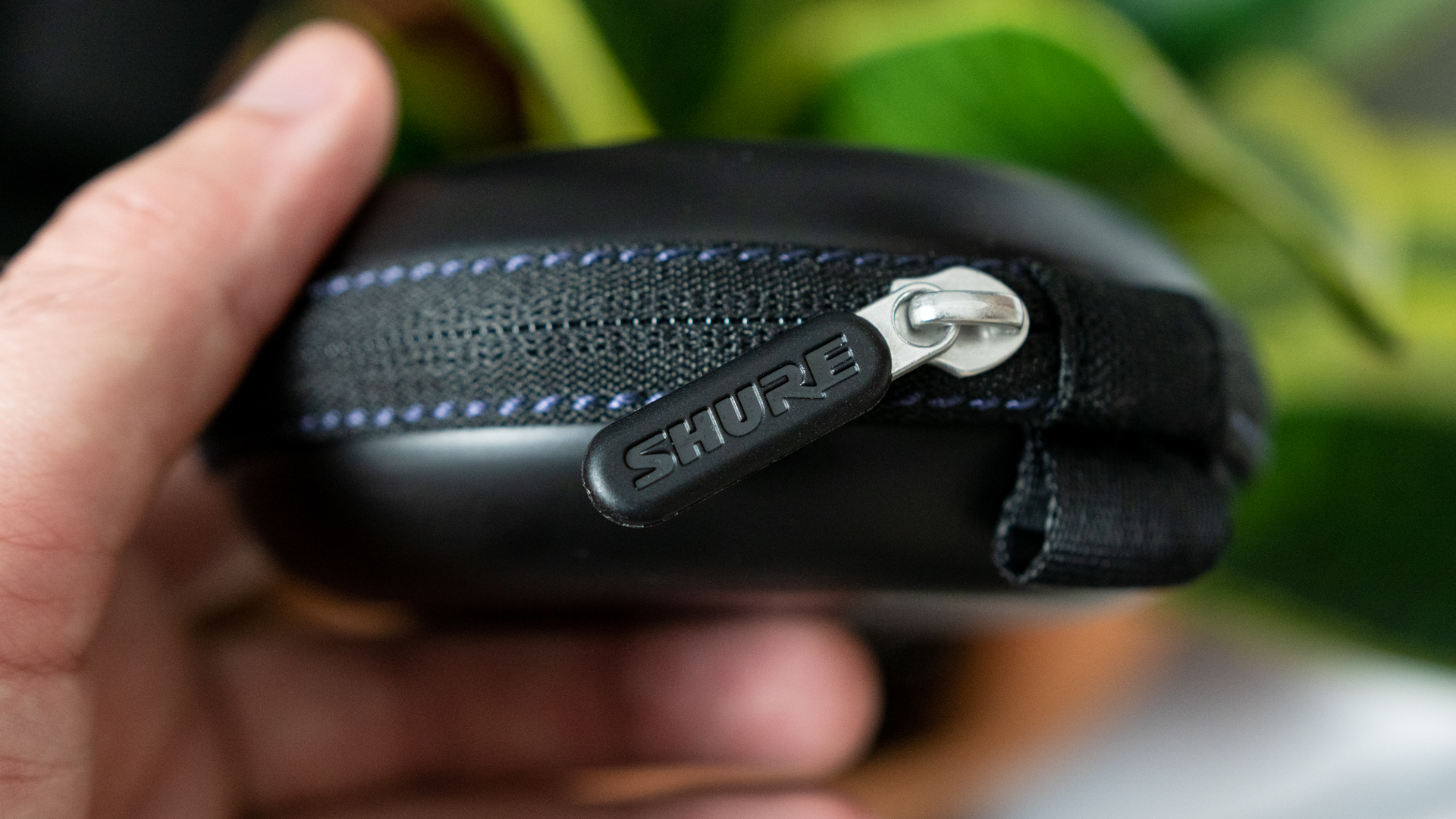
One major downside to these is that they don’t automatically power on when you remove them from the case. You need to manually power them on every time. This gets really annoying, very quickly. Similarly, simultaneous connections aren’t possible, because these don’t support Bluetooth multipoint. You can’t even switch quickly between devices; instead, you have to jump through all the hoops of each source device’s Bluetooth settings.
How do you pair the Shure AONIC 215?
Connecting to the Shure AONIC 215 is simple. You need to:
- Remove the earbuds from the case.
- Press the right adapter button to power the right earbud on.
- Wait for the Shure AONIC 215 to appear in the Bluetooth section of your source device. Select them to initiate pairing.
- When you hear the voice prompt say, “connected,” power on the left earbud.
- The left bud automatically connects to the right earbud. You’re then ready for playback.
How long do the batteries last on the AONIC 215?
In our testing, we got exactly 7 hours, 5 minutes of constant playback. We achieved this number by playing music at a constant output of 75dB(SPL) until the battery died. Although this measurement falls short of the official eight-hour playtime, you’re likely to reach that mark if you listen to lower volumes.
The case charges via USB-C and gives you three extra charge cycles before it requires a top up. You can check how much juice is left by pressing the indicator button on the back of the case. There is no mention of fast charging on the product page, or in the AONIC 215 paperwork.
How’s the microphone of the Shure AONIC 215?
The microphone is good enough to get your voice across if you’re on a call but it still doesn’t sound great—which isn’t surprising, given that true wireless earphones aren’t really built for that.
For those of you who spend your days on Skype calls, these aren’t your best option. The microphone is embedded into the adapters, which lies behind the ears, and the quality is inconsistent. These are fine for quick casual calls, but if you’re looking to spend any extended amount of time using the microphone, you’re going to be disappointed. This could very well be fixed with a firmware update, as we experienced similar issues with the Shure AONIC 50 over-ear headphones, and an update greatly improved mic quality.
Shure AONIC 215 microphone demo:
How do these sound to you?
As of October 20, 2021, 208 readers have rated the above mic sample as somewhere between “okay” and “good.” This is a pretty typical result for true wireless earbuds and what you should expect to get out of any products of this type.
How well does the Shure AONIC 215 block out noise?
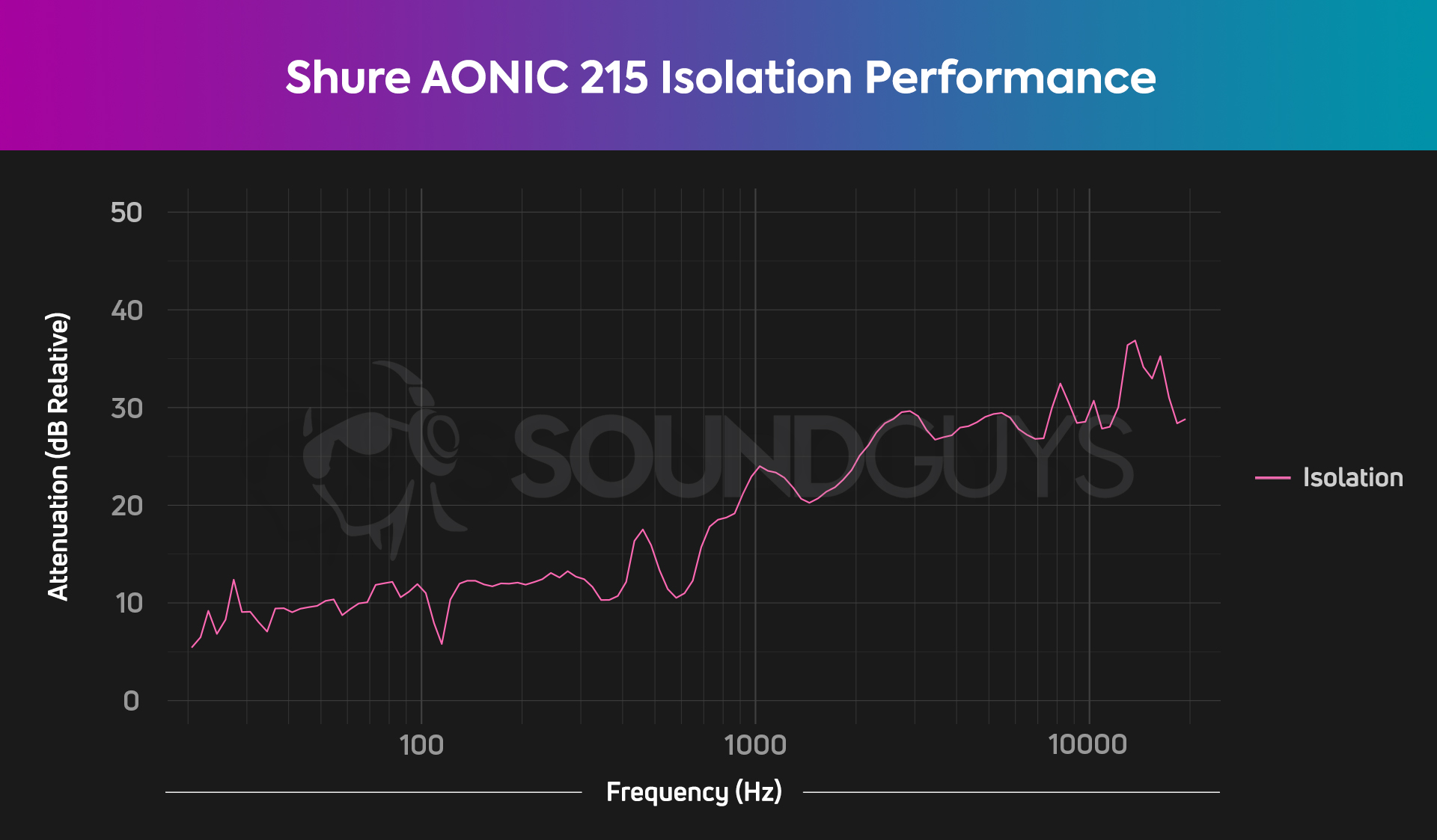
Isolation performance is very good, but that can change with the type of tip you use. While they fit nicely and passively block out a lot of high-frequency sounds, noises like A/C units and car engines will only sound half as loud as they would without earbuds. This is pretty typical of low-density foam, so you may want to grab some third-party tips compatible with the Shure SE215 if you’d like better isolation performance.
If you’re looking for quality active noise canceling, the Shure AONIC 50 is a great pair of wireless headphones with some of the best noise canceling on the market. If your heart is set on true wireless in-ears, check out our list of the best noise canceling true wireless earbuds.
How does the Shure AONIC 215 sound?
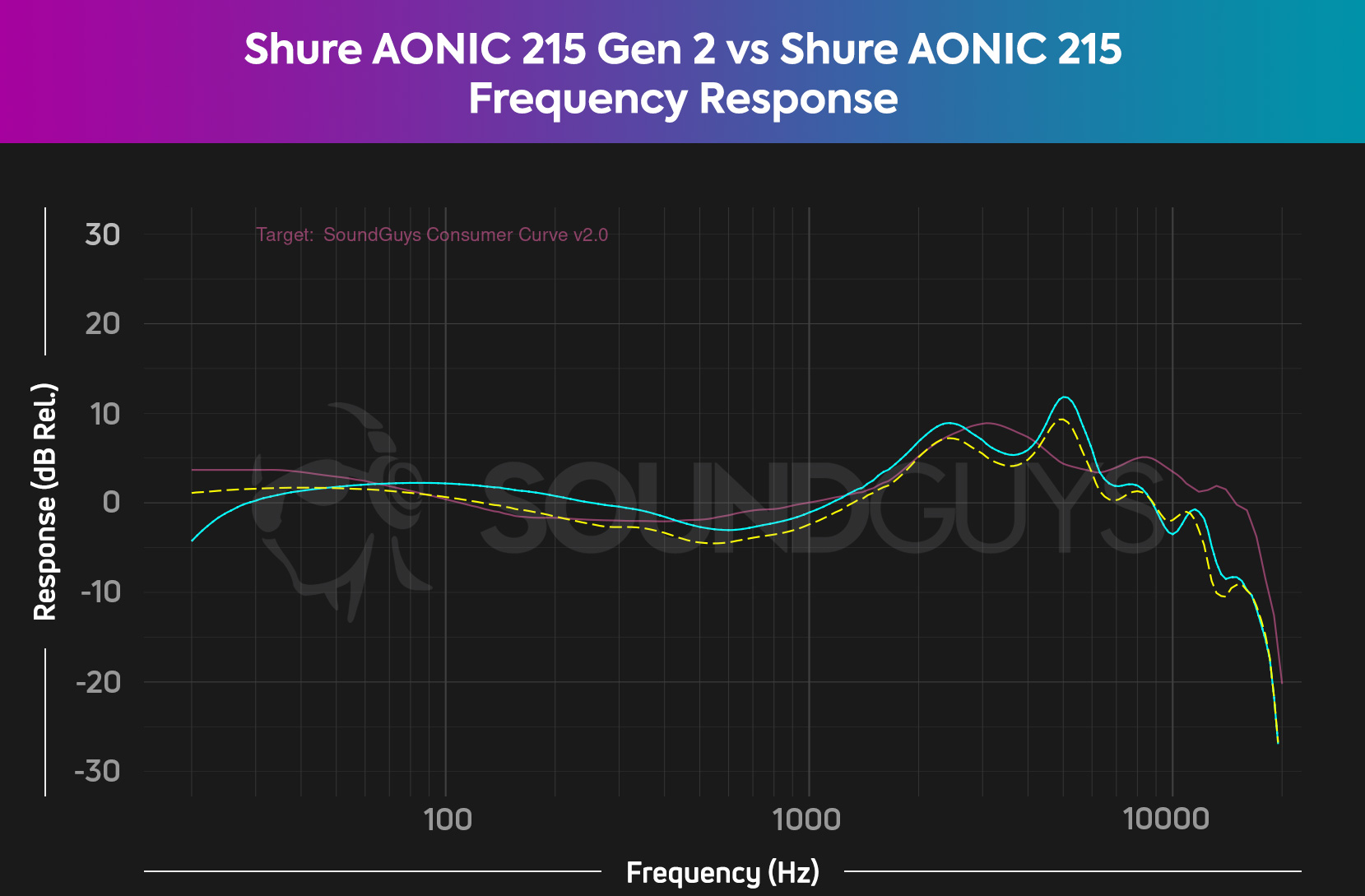
I haven’t exactly painted the picture that these are “must-haves” so far, but that really changes when it comes to sound quality. Shure knows how to make premium in-ear monitors (IEMs) and these true wireless earbuds have the best sound quality of any pair I’ve tried to date. As far as the frequency response goes, this headset closely follows the SoundGuys Consumer Curve, so it’s bound to please a wide array of listeners.
Lows, mids, and highs
You can hear this in the song Generator ^ Second floor by Freelance Whales, when the bass at 0:45 doesn’t mask any of the stringed instruments that carry the melody. That same accurate reproduction follows through to the mids, with just a little bit of extra emphasis on notes higher than 1kHz. Again, this makes it easier to hear detail.
These earbuds are for people who value audio quality and portability.
The benefits of a gently amplified upper-midrange response come across in the song Hard to Explain by The Strokes, when Julian Casablancas’ voice is audible and never hard to hear above the band’s instruments. Even when the full band comes in about a minute into the song, there’s never a point where one instrument makes it hard to hear another.
Related: Best noise aptX Bluetooth headphones
The only weird thing I found with the frequency response has to do with treble notes, which you can see in the graph as the line dips just before 20kHz. This is fine since most people lose the ability to hear notes that high, but I can tell that high notes aren’t as clear as they should sound. Even still, the highs sound really good and cymbals and hi-hats have just the right amount of reverb, but a critical listener will perceive this as “missing” detail.
Should you buy the Shure AONIC 215?
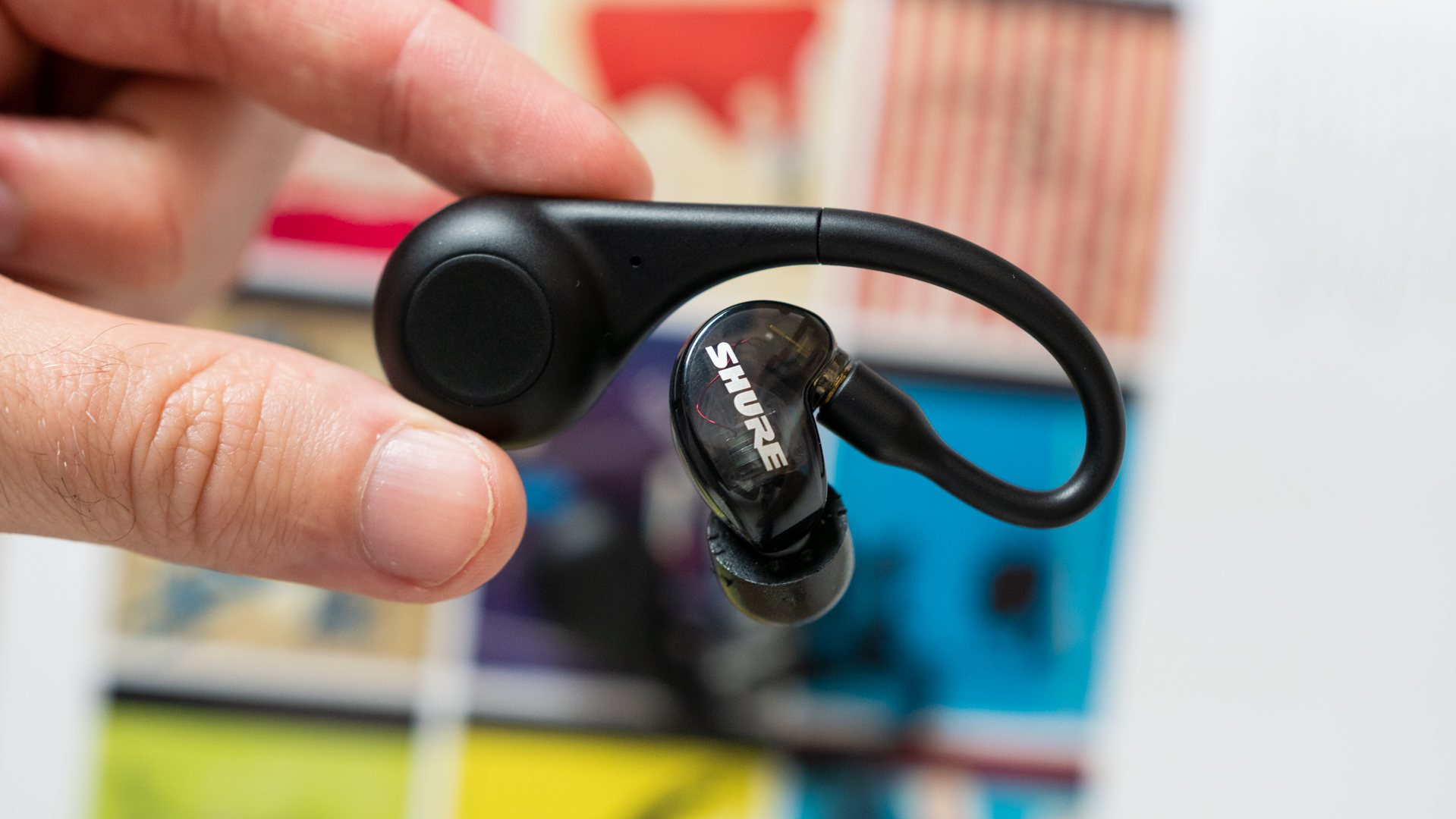
You’ll have a hard time finding the AONIC 215 headset anywhere with the release of the Shure AONIC 215 Gen 2, a nearly identical pair of earbuds with a more varied feature set. You can exercise with the second-gen AONIC 215 due to the IPX4 rating, but the Bluetooth adapters aren’t the most durable. At least the second time around you get onboard volume controls, though.
If you can still find the AONIC 215 kicking about on second-hand sites, it’s a good buy for those who want to enjoy their music on the go without sacrificing sound quality. For those who want a pair of true wireless earbuds that is easy to use, well, the AONIC 215 isn’t really for you. The charging case is frustrating and is far from portable. Premium features like transparency mode are a pain to use too.
What should you get instead of the Shure AONIC 215?
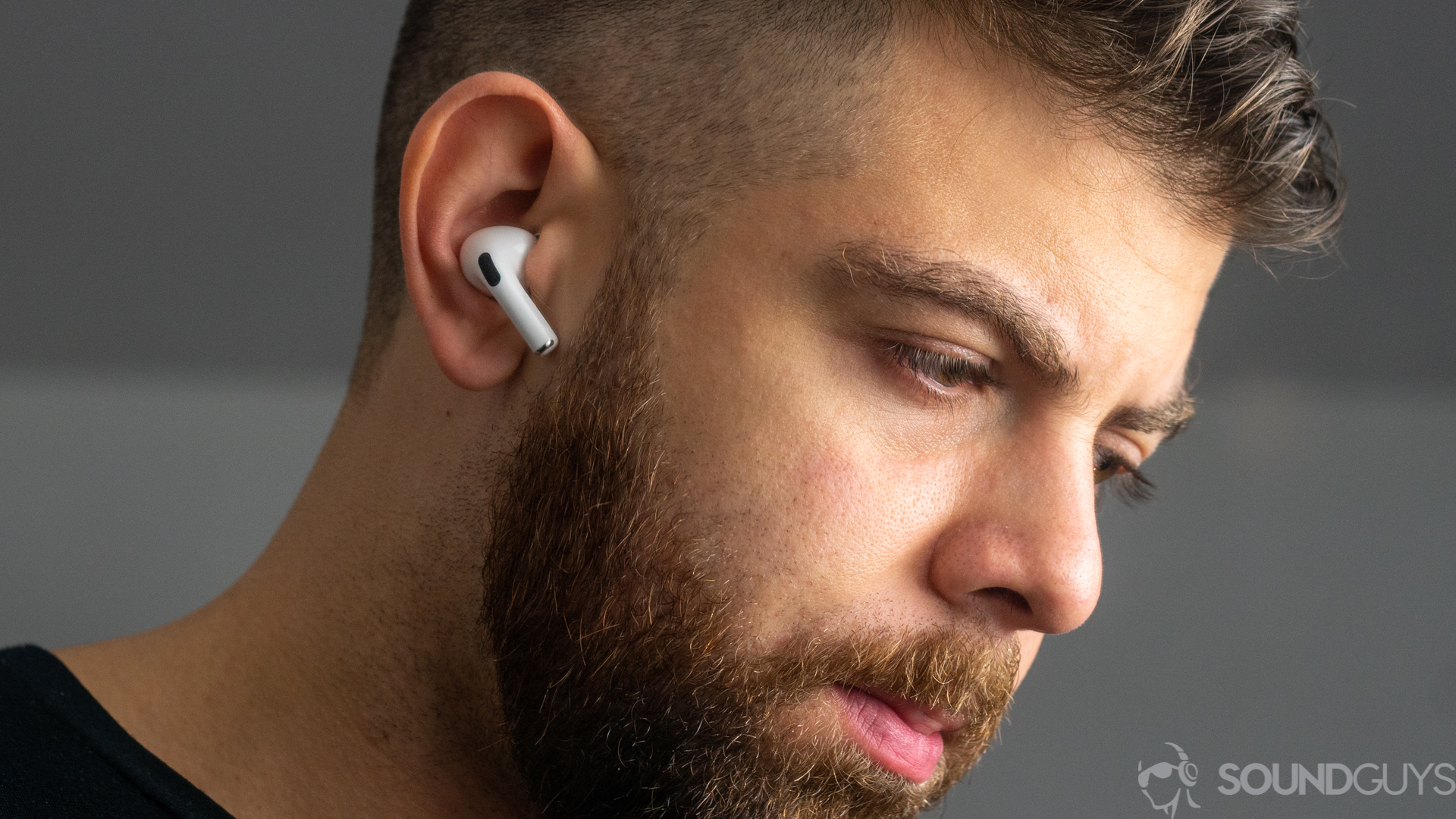
For daily use earphones, consider the Jabra Elite 85t or the Apple AirPods Pro. Both Jabra and Apple’s earbuds afford a more enjoyable user experience and greater convenience than the AONIC 215. Oh, and each has active noise canceling. If you own a Samsung Galaxy smartphone, go and grab the Samsung Galaxy Buds Pro, a pair of compact IPX7 rated earbuds with noise canceling and plenty of software features.
Thank you for being part of our community. Read our Comment Policy before posting.